A complete guide to the different parts of a paintbrush and how they work together to create the perfect tool for your artistic painting needs. We cover everything from the various components and functions to the different sizes, shapes, and materials available. Keep on reading.

Paintbrush in All Its Glory: Structure and Functions
It is well-known that creative artists cannot function without their tools. In addition to the palette knife and painting substances, the paintbrush is the most important tool for an artist.
The sensitivity, expressiveness, and perception of the artist must go through the tiny length of a paintbrush. The choice of brush will impact the painting's style and quality, as well as its completion time and the artist's enjoyment of the process.
Specialized skill is required in the production of brushes, notably in selecting and shaping the fibers. For instance, for a high-quality oil painting brush to do its magic, it should have resilient, secure, and snug-fitting bristles, a firmly attached, seamless metal ferrule, and a long, sturdy, sealed handle.
The structure of a paintbrush
First, let's look at what makes up a brush. The components of a paintbrush are bristles, ferrule, and handle. Understanding how a brush is built tells us a lot about its quality, durability, and maintenance needs.
Anatomy of a brush
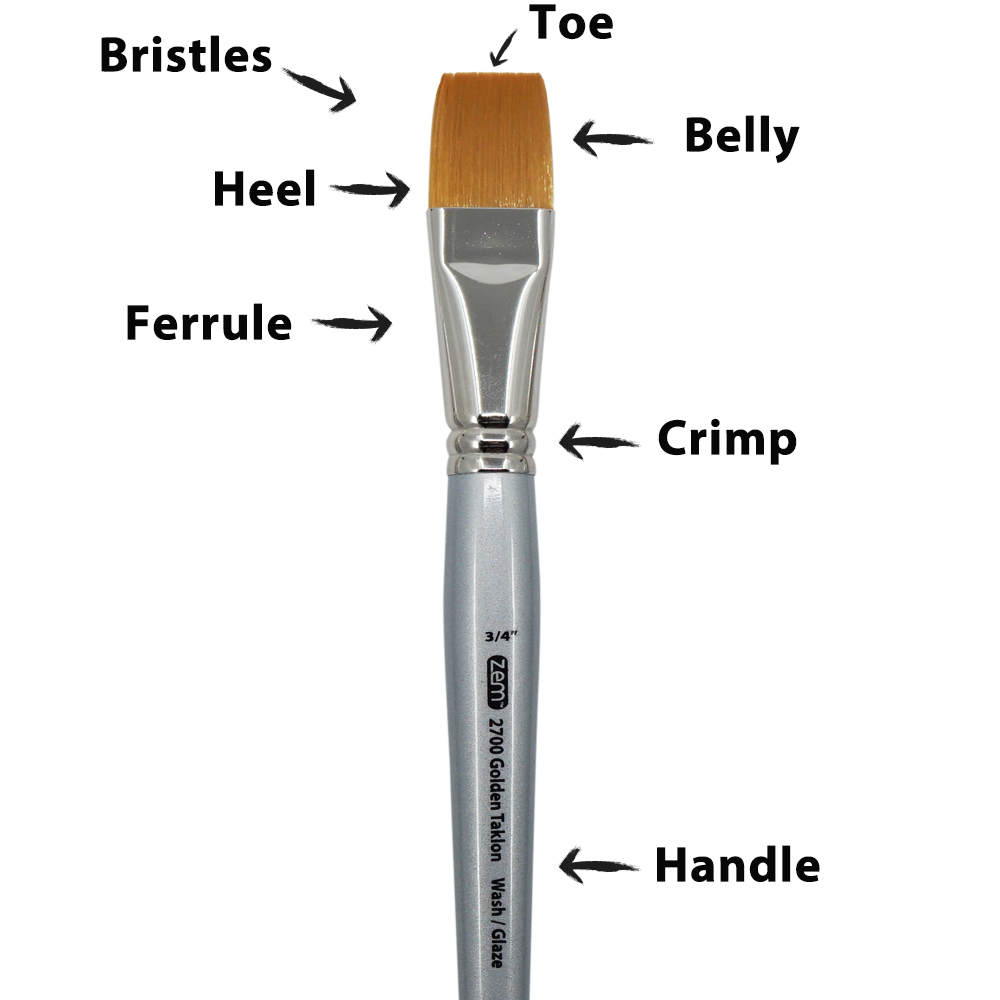
Bristles
Bristles are also called hairs. They can be natural, artificial, or a blend of the two.
Bristles play an important role in the production of brushes, as they are what hold the paint. Brush heads can be made of either natural materials (like hog, sable, or badger hair), synthetic fibers (like nylon or polyester) or a combination of both. Further, brushes come in various shapes - round, flat, flat fan, flat filbert, or flat round - depending on the project at hand and its desired outcome.
- Soft bristle brushes

Soft-bristle brushes provide increased control when creating smooth, blended paint surfaces with a fluid medium. The paint must have a rather fluid consistency for these brushes, as they lack the strength to apply heavy body paint (like thick, buttery acrylics). This also renders them useless for wet-in-wet painting, a technique that requires the paint to be hard. However, these soft bristle brushes are excellent for creating smaller details - such as hair and grass - due to the fine points at the ends of their brushstrokes.
- Stiff bristle brushes

Brushes with coarser bristles are ideal for generating rough effects and thick impasto layers. Stiff, springy synthetics are well-suited for thick paint and will make painterly marks in the pigment. They may be loaded with paint and are preferred by wet-in-wet painters because they can be dragged over wet paint, making them excellent for layering.
Ferrule & Crimp
The brush's ferrule is the metal band connecting the bristles to the handle, and the crimp locks it in place. Ferrules can be made from several materials, including tin, aluminum, brass, copper alloys, nickel, or chrome plated. Better quality brushes boast either a brass or copper alloy ferrule with a double or triple crimp for superior adhesion, ensuring that the bristles won't fall out and that the ferrule stays firmly attached to the handle.
Handle
Handles for brushes can vary in material, size, and length; they are generally made of hardwoods such as beech or acrylic. Shorter handles allow for better control over various types of paint applications, whereas longer handles provide the excellent balance and grip that oil painters need. The brush size (Paintbrush Buying Guide) is indicated by the number labeled on the handle, ranging from 20/0 ("twenty ought", smallest size) to larger numbers, up to #12 and beyond.
Synthetic or natural bristles?
Some artists favor natural bristles, while others favor synthetics. What is the distinction? Does it even matter?
Let's examine the characteristics and advantages of each type of paintbrush to discover which is most suitable for your artistic endeavors. Before we get into the specifics of brushes used for art creation, let's clarify the phrases "natural" and "synthetic."
- Natural paintbrushes and Synthetic paintbrushes
Natural bristles are created from animal hair, such as hog, sable, or badger. They are ideal for use with the following:
- Based-oil paint
- Shellac
- Varnish
- Alkyd enamels
- Stain
- Polyurethane
- Milk paint
- Chalk-based paint
- Clay-based paint.
The bristles naturally separate, making them ideal for picking up, holding, and distributing natural paints and accelerating the painting process. The soft, flexible bristles of natural bristle brushes allow for applying a thin, uniform coat of paint while minimizing streaks and evenly distributing paint.
Nevertheless, they might be more difficult to handle if precise paint details are required. Additionally, they may shed the first few times they are used. A high-quality brush, however, will stop shedding after the second or third use.
A Pro Tip:
Watercolorists frequently employ brushes made from natural hair (squirrel, badger, or sable) because of their inherent capacity to absorb and retain water. Yet, modern synthetic watercolour brushes are among the most resilient watercolor tools available.
Our blend of synthetic and sable is adaptable to a variety of techniques and provides an excellent balance at an affordable price. They retain a good amount of water, are soft enough for layering without lifting, and have the spring and control of a synthetic.
- Synthetic paintbrushes
Synthetic brushes can mimic the functions of a natural fiber or create different artistic effects. Frequently, synthetic bristles are composed of nylon, polyester, or a combination of the two. They are ideal for applying water-based paints, though some synthetic brushes are compatible with both water- and oil-based paints. Synthetic brushes are especially useful if you are using:
- Water-based latex paints
- Gloss paint
- Water-based primers
- Acrylic paint
- Water-based wooden coatings.
The variety of shapes
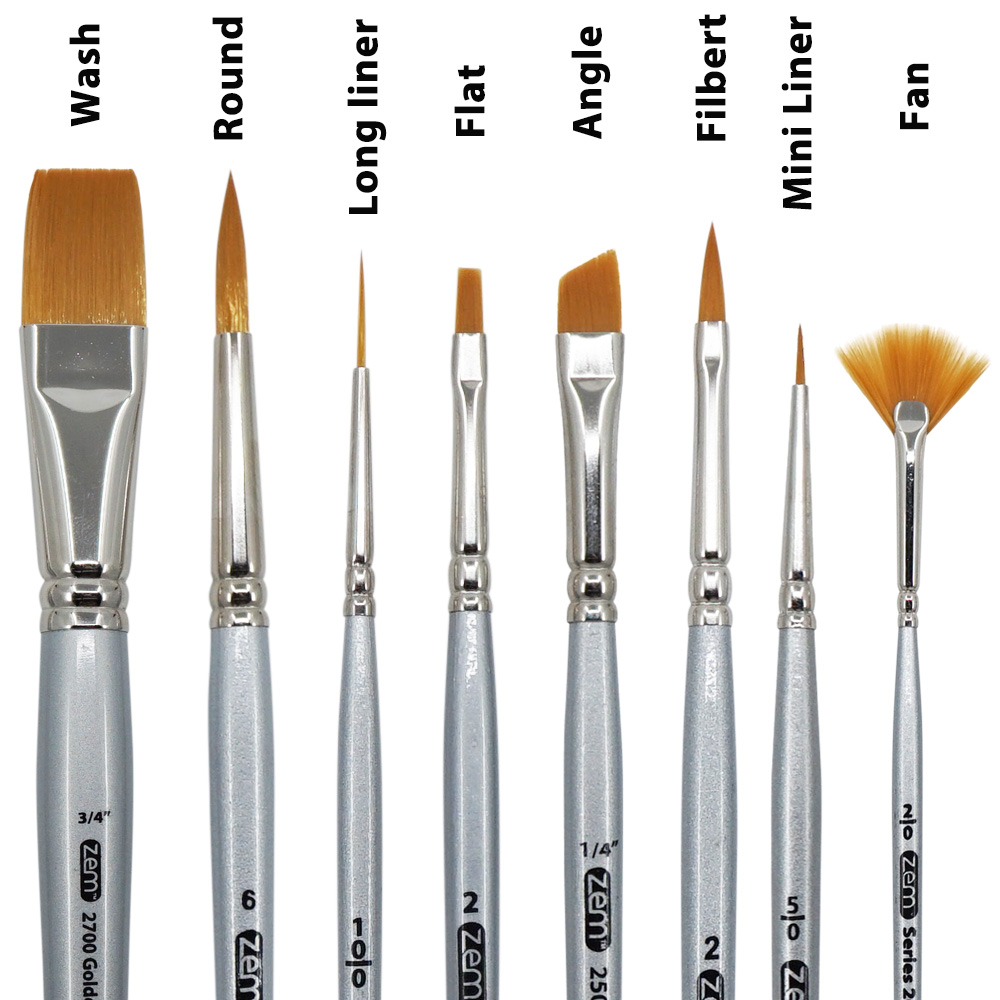
The shape of the brush can alter the ease with which you can paint a project. A brush with a squared-off end is ideal for painting flat surfaces since it holds and distributes paint uniformly. Angled brushes offer greater control and a straighter line, making them suitable for precision work on trim and corners.
The 19th century saw a major development in brushes with the introduction of metal ferrules. Previously, brushes had to be round due to their construction being based on a quill feather. This new development enabled the creation of flat and filbert shapes, sparking an artistic revolution for painters. Nowadays, these new types remain the most common and essential forms of brushes. The Impressionists are credited as some of the first to take advantage of this technology and used it to great effect.
Paintbrush shapes
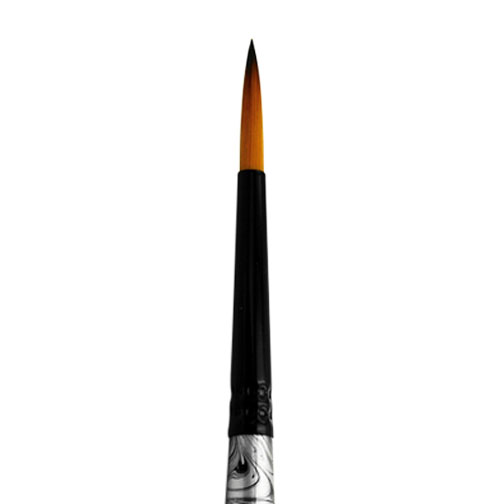
When asked to draw an artist's paintbrush, most individuals will likely depict a round brush with a thin handle and a fat, spherical head that tapers to a fine point. This type of brush is popular among artists because it can provide different finishes depending on its use. Creative applications include filling, drawing, applying washes, spot coloring from the tip, as well as producing thin lines for detail and thick-to-thin marks.
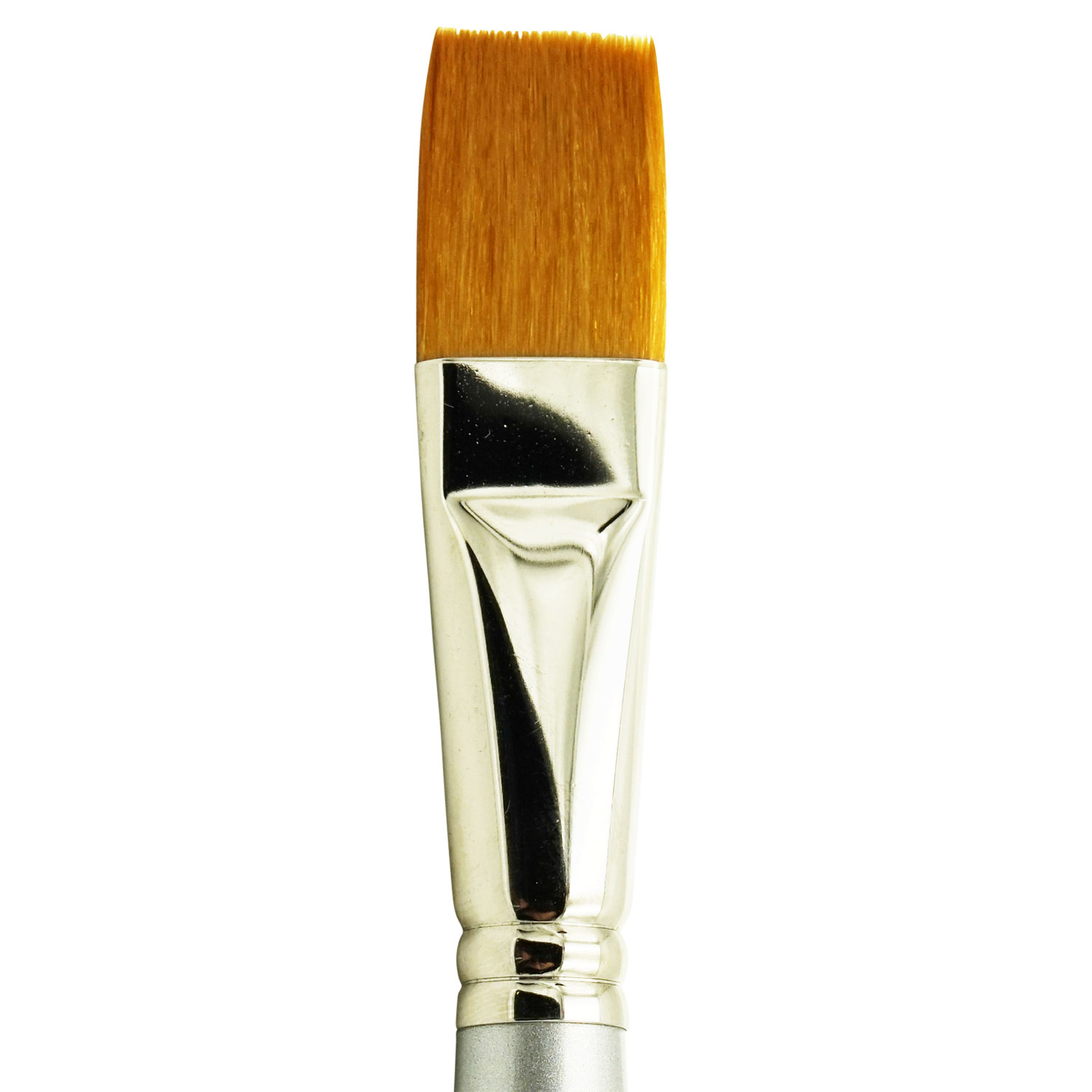
Flat brushes, with their row of hairs, clamped in the ferrule and squared-off top edge, create a rectangular brush head and come in two versions: long or short, also known as "bright". The hair length affects the amount of paint carried by each brush and its flexibility for bigger strokes.
Long flats carry more pigment but offer less control over details; on the other hand, brights hold shorter amounts of paint but provide better precision with smaller marks. It's important to note that brush sizes are not standardized across manufacturers and that the designation of "short" or "long" has nothing to do with handle length. Variations within this type of brush offer versatile results, from vibrant Impressionist dabs to controlled fine details.
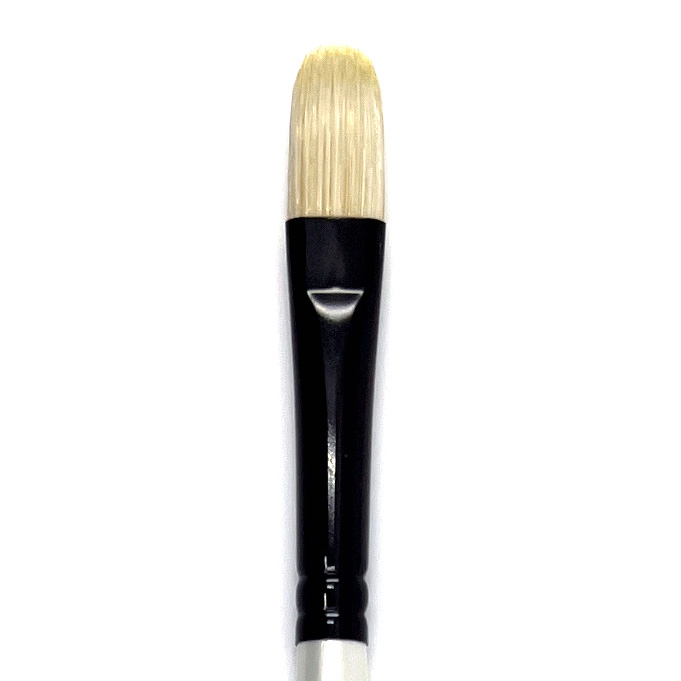
The filbert brush is an essential tool in any oil or acrylic artist's collection. Its unique shape, resembling the nut of a filbert tree, allows it to produce distinct brush strokes. These include broad lines with soft edges that can easily blend, as well as thin lines and tapered marks. In addition to its versatility, this powerful brush has been given the fitting moniker "tombstone" due to its impressively flat form. Need an all-in-one painting solution? Look no further than the Filbert!
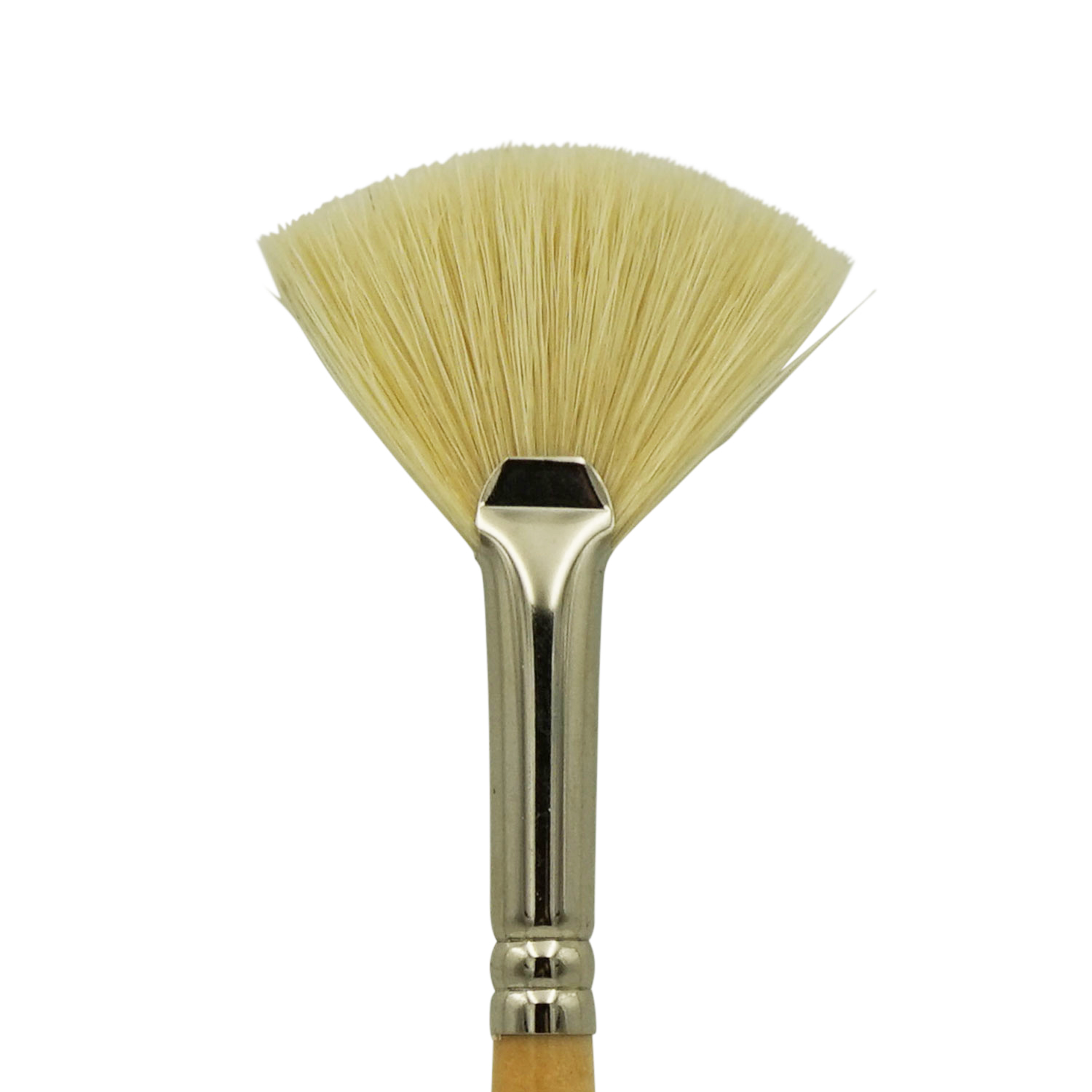
This specialized brush is essential for creating lifelike foliage in landscape paintings. Its fan shape allows for successful blending and dabbed marks that replicate various features, such as fur, waves, and clouds. Additionally, the brush can be used to blend colors and smooth out brush strokes.
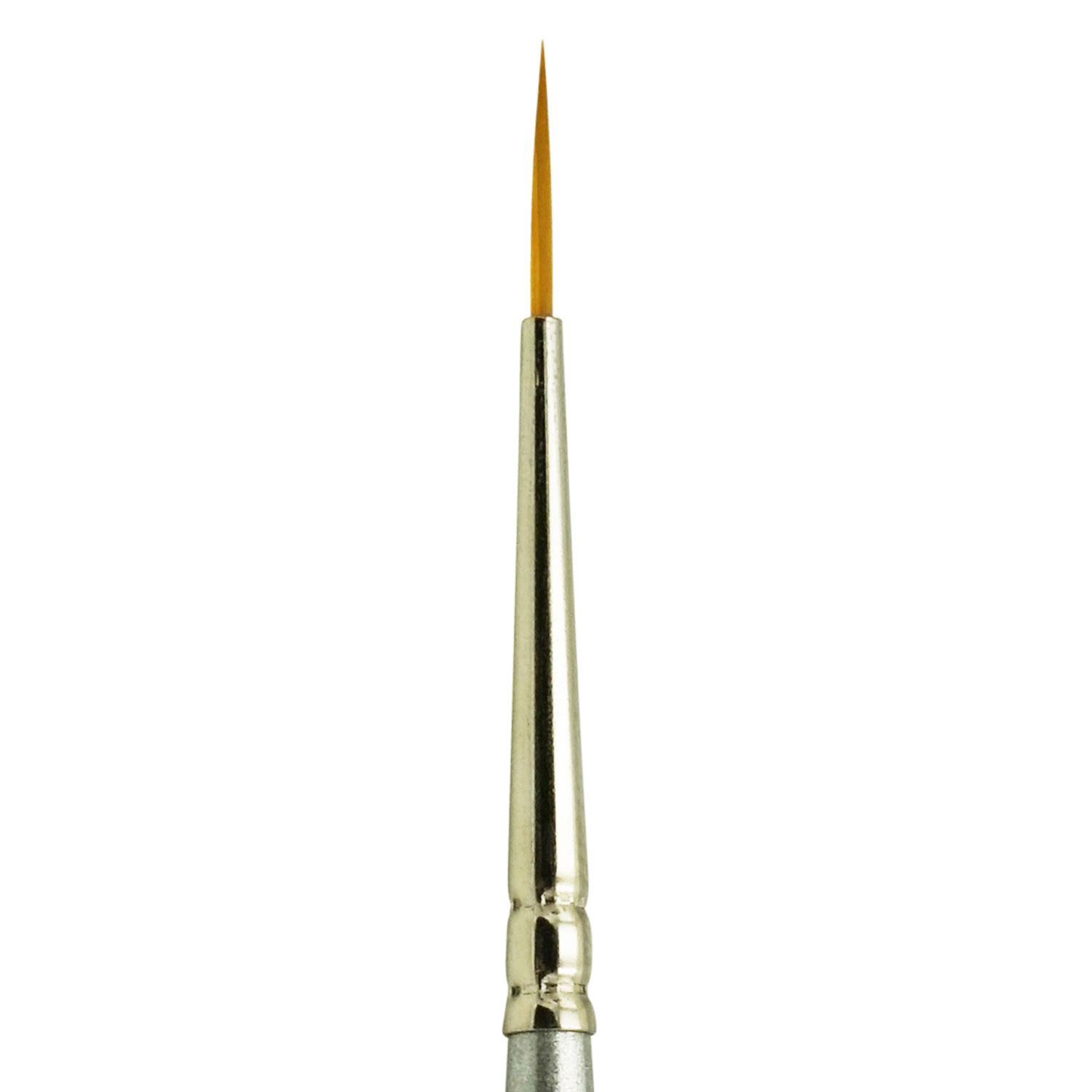
This round paintbrush features longer hair than the standard model, allowing for an improved grip as well as reducing any occurrence of handshake movement when painting. Improved control and accuracy result from brushing closer to the head of the brush.
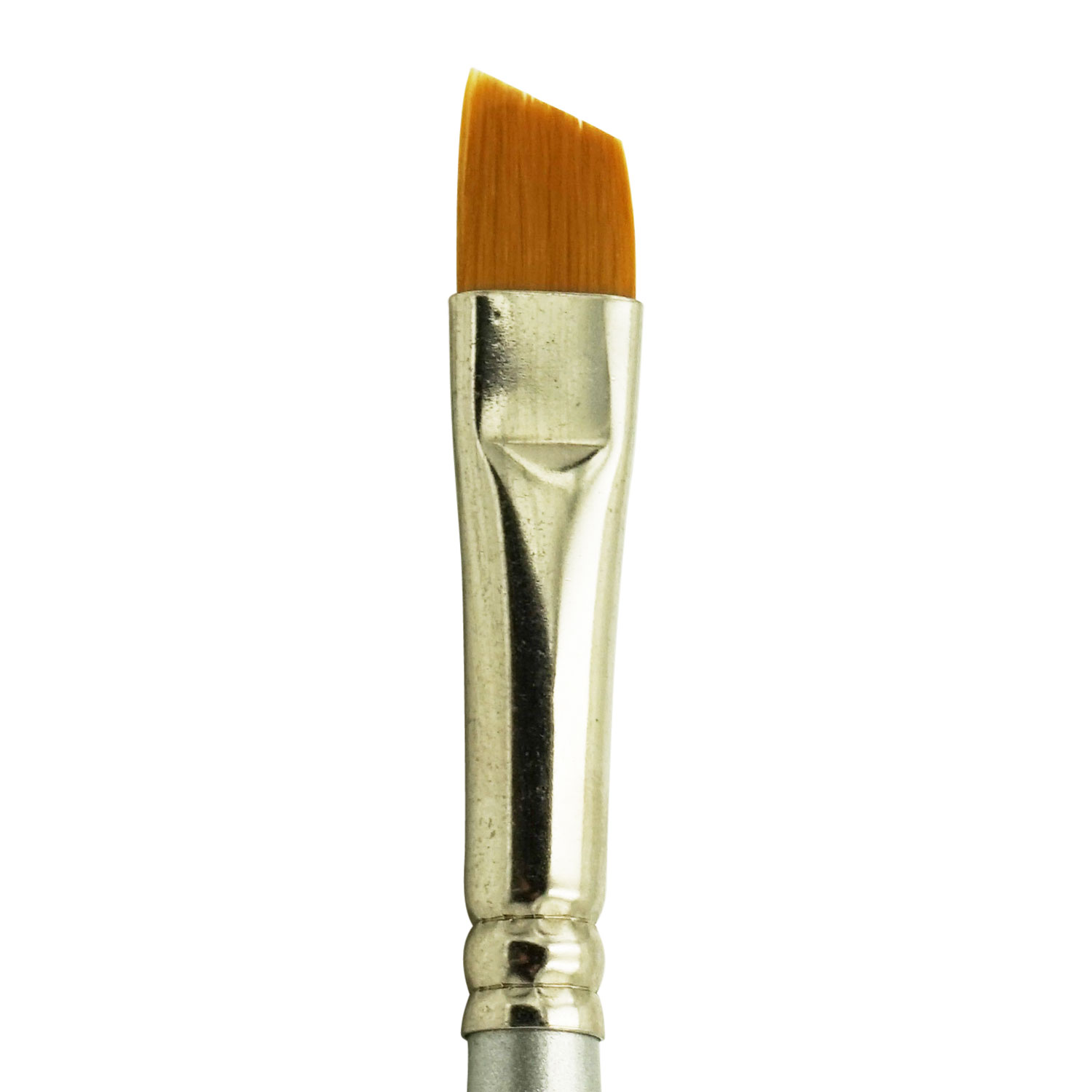
The angled flat brush is useful for painting crisp lines and edges, most notably vertical lines. This brush usually has its hair or fibers cut at an angle away from the top edge. Thus, it can achieve thick and thin strokes, much like a calligraphy pen would produce.
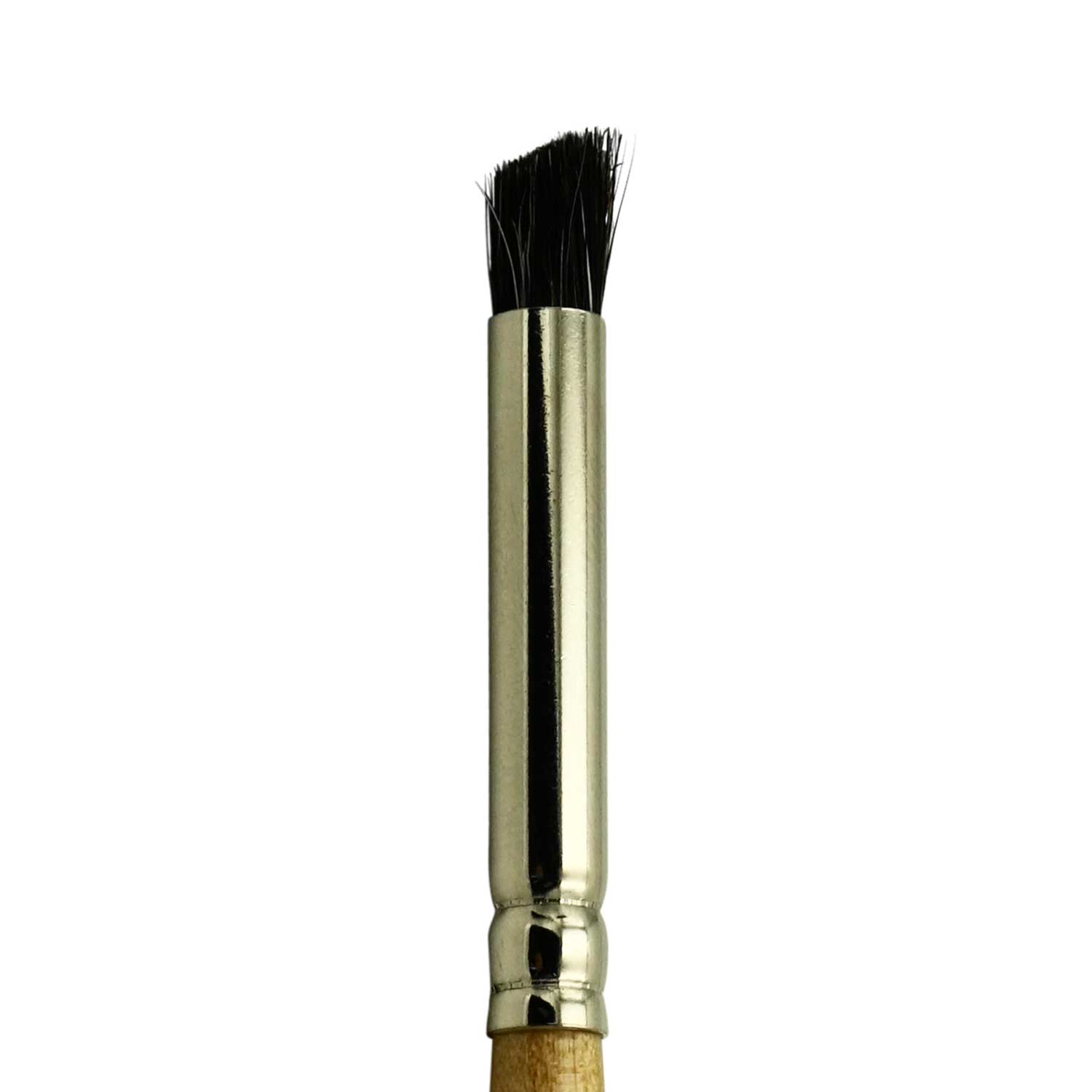
This round stippling brush is a versatile tool, great for creating foliage or adding texture to your artwork through stippling. It's cut with a slight slant and has been designed to make the desired textural effect efficiently. The deerfoot-style bristles provide excellent outcomes every time.
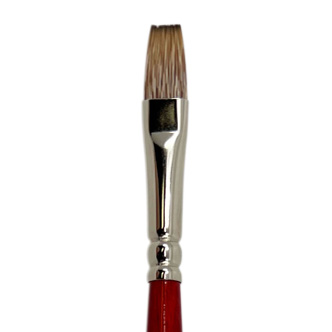
A special type of brush, the shader brush, is designed with hairs of varying lengths. The tufts that protrude from the others create multiple small marks when stroked across the canvas, providing a texture reminiscent of foliage or fur. This particular style creates numerous small marks at once, achieving an effect that evokes natural fur.
Desired paintbrush qualities
There are some characteristics that are desirable for any paintbrush, independent of the paint used. A brush must:
- Maintain its functionality and shape despite everyday use.
- Have a high capacity for paint retention and paint discharge.
- Possess elastic and sturdy hairs/fibers/bristles, a characteristic known as spring or snap.
- Be sensitive to our hand, our technique, and the surface it contacts.
- Be chemically resistant so that cleaning with chemicals is possible.
Paintbrush sets
For those just beginning their painting journey, paintbrush sets can be a cost-effective way of familiarizing yourself with the different types and sizes of brushes available. Research is key.
With such a wide selection of paintbrushes on the market and various painting techniques available, it's necessary to arm yourself with knowledge before shopping. Over time, as your skills progress and you gain more experience selecting suitable brushes for your projects, feel free to invest in higher-quality materials that may prove beneficial.
Brush sets come conveniently assorted in sizes and shapes.
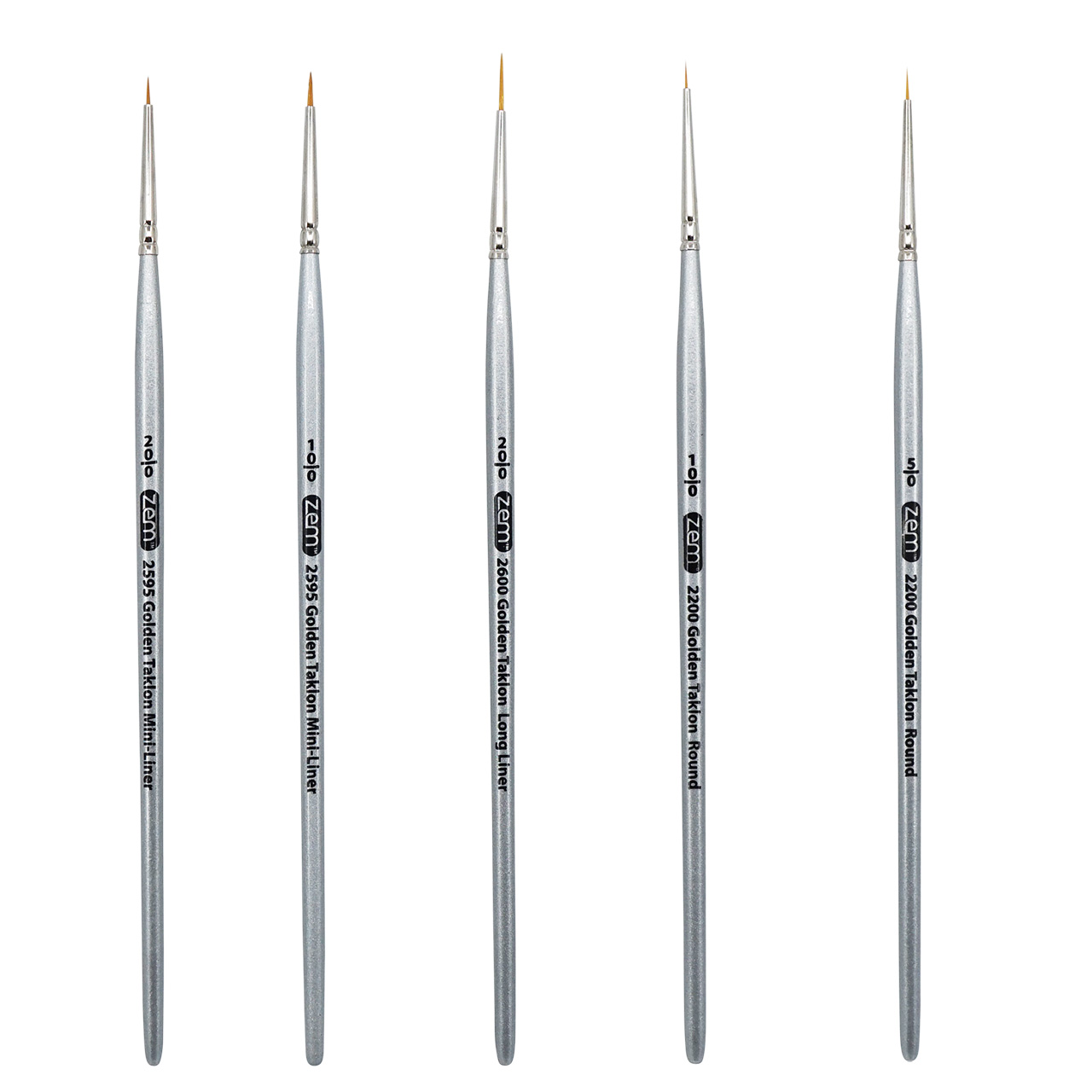
At Zem Brushes, we strive to create affordable, high-quality brushes for a variety of budgets and objectives, from the budget of a new artist to that of a classroom teacher. Our paintbrushes sets are an affordable pick for amateurs and professionals alike. I am a fan of the Classroom Artist Brush Box Set Series, which features twelve brushes of six distinct types, including all the sizes and shapes of brush you'll ever require.
Another great set, excellent for beginners, is the Student Golden Synthetics Sets. They present a combo set of various sizes and shapes, nicely organized to help beginners work with several types of mediums. Instead, a perfect gift to encourage a loved one is the Green Sable Synthetic Brush Set, which features shorter handles that are easy to hold and premium quality sable hairs that hold paint well and are extremely durable.
Brush sets are an excellent option for you. In addition to being affordably priced, the brush set includes the essential sizes and forms, saving you time and effort.

There are many different types of paintbrushes available on the market, each with its own specific purpose. I hope that reading this article on the anatomy of the paintbrush and its functions will help you create a beautiful work of art.
Read also:
How to break in a new paintbrush properly & cleaning painting brushes

